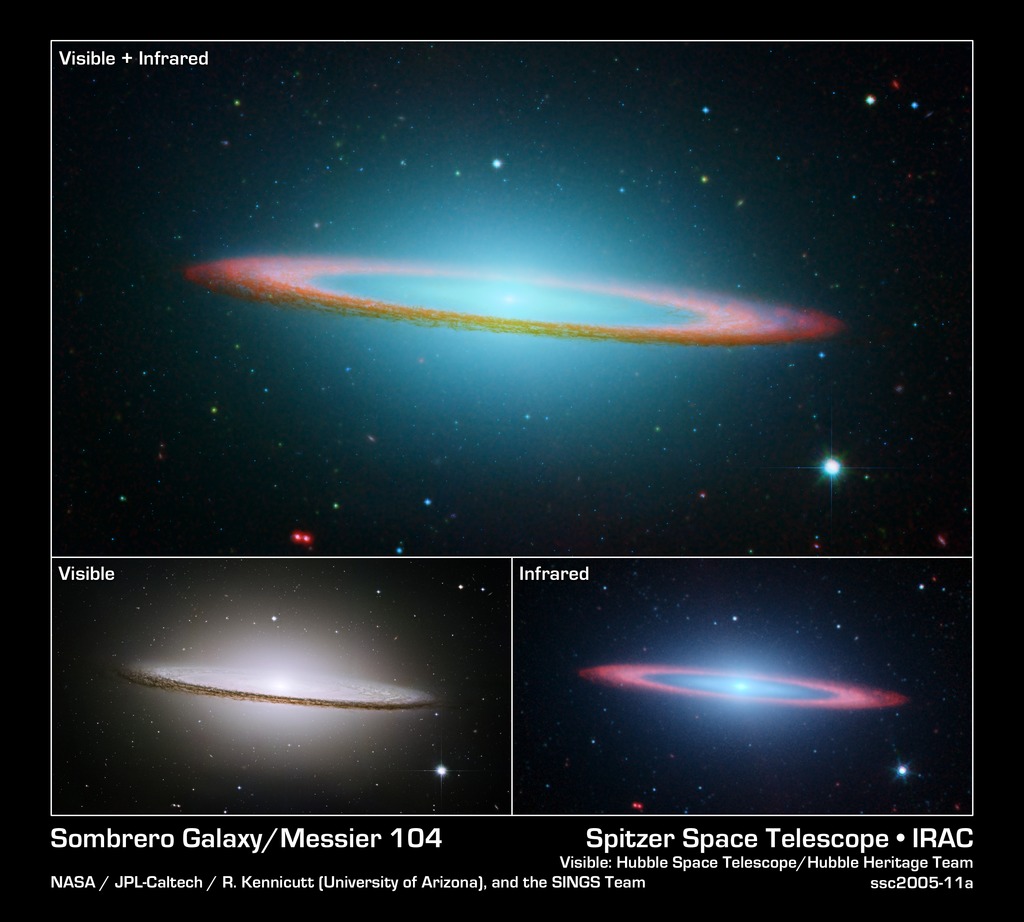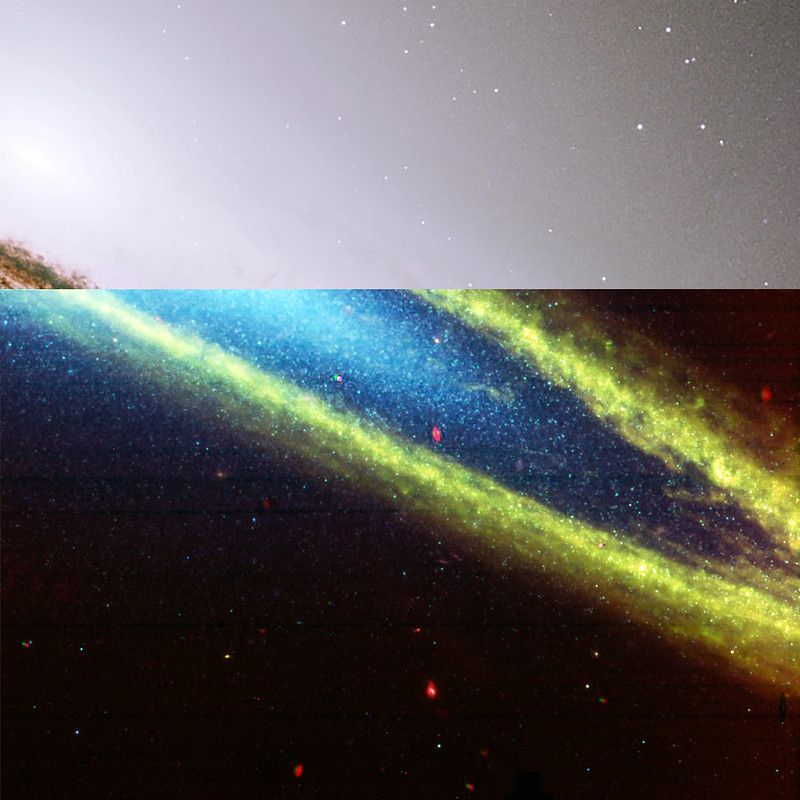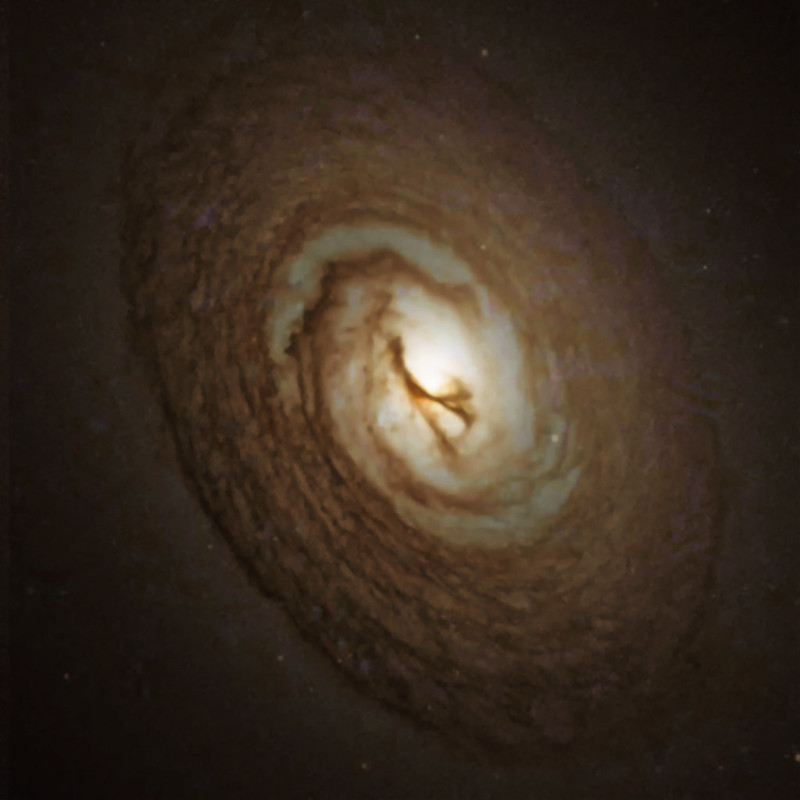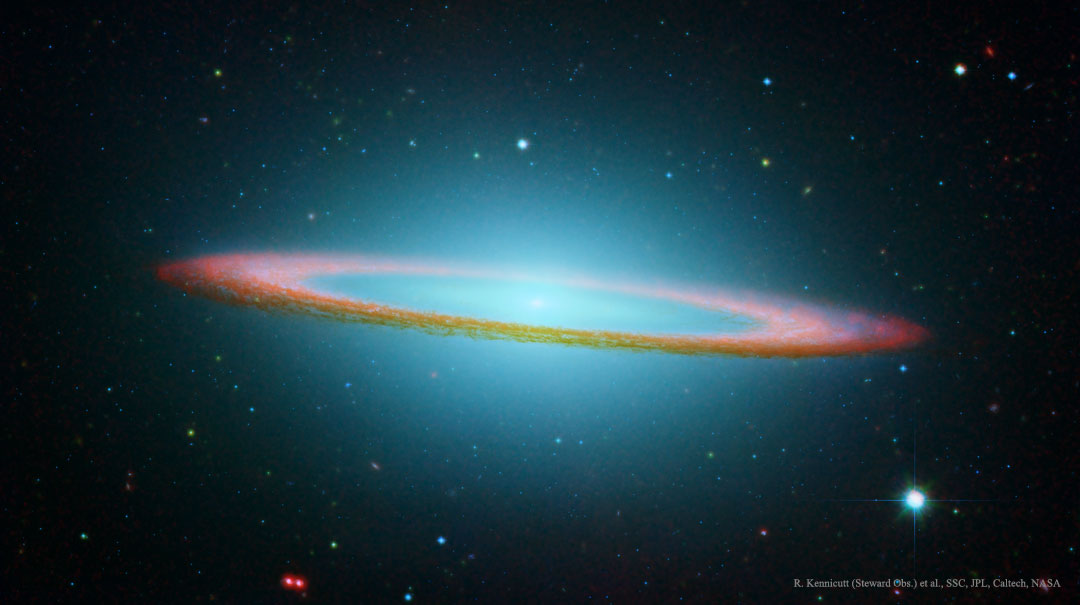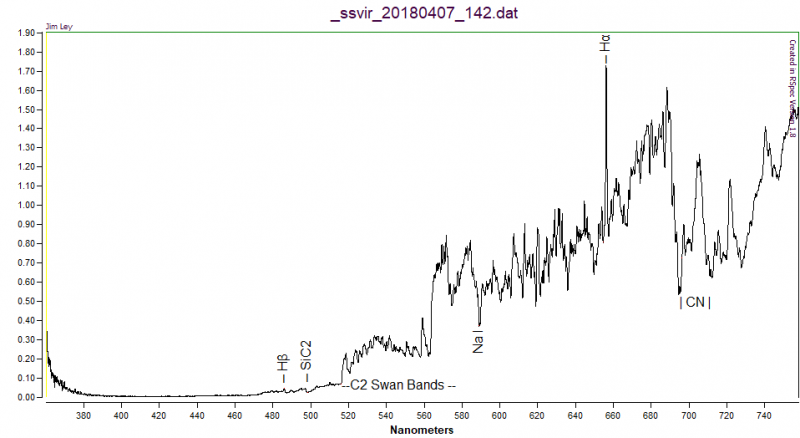johnnydeep wrote: ↑Sun Aug 13, 2023 8:31 pm
De58te wrote: ↑Sun Aug 13, 2023 3:59 pm
"The Sombrero Galaxy, also known as M104, spans about 50,000 light years across."
There seems to be some discrepancy with the Wikipedia Sombrero Galaxy article. And I quote; [The Sombrero Galaxy] has a D25 isophotal diameter of approximately 29.09 kiloparsecs (94,900 light-years),[1] making it slightly BIGGER in size than the Milky Way. unquote
You beat me to it. I'll chalk it up to a repeat APOD and (hopefully) a more accurate recent reference for the diameter in Wikepedia (*). But if the Sombrero Galaxy really
IS only 50 Kly in diameter, it makes it much less impressive in my view.
[ (*) EDIT: the reference for the diameter in Wikipedia is rather old:
"NASA/IPAC Extragalactic Database". Results for M104. Retrieved 2008-07-09." ]
Some more info: from
https://esahubble.org/images/opo0328a/, the FOV of the image below is 9.57 x 5.36 arcminutes, which,
assuming the distance of 30 Mly is correct, makes the real extent of the image at that distance out to be 87500 x 46700 ly. (I used the calculator at
https://www.1728.org/angsize.htm.) So, the diameter of the bulk of what we can see here a lot closer to 50000 ly than it is to 100000 ly. There goes the majesty of the otherwise totally awesome Sombrero! <sigh>

Thanks, Johnny! Interestingly, a
2003 Hubblesite caption of a portrait of M104 claims that the diameter of this galaxy is 50,000 ly, but a
recent (2021) NASA caption says nothing about the diameter of M104.
I was going to ask someone to calculate the size of M104 based on its apparent size on the sky and its distance. Let's see, Johnny, you calculated
the diameter of the APOD at a distance of 30 million light-years, not the size of
the visible diameter of the galaxy?
Okay. According to Wikipedia, the apparent size of M104 is 9′ × 4′ — I assume that means 9 x 4 arcminutes? How big is a thing whose apparent diameter is 9 x 4 arcminutes at a distance of 30 million light-years?
Wikipedia talks about the isophotal diameter of M104. This apparently refers to the distance at which the surface brightness of a galaxy drops below a certain value. But take a look at this ESA/Hubble portrait of M104:
We see no signs that the galaxy, so to speak, gradually drops off beyond the well-defined dust lane. M104 appears to end abruptly at the outer edge of the dust lane, as if this dust lane was a piece of string keeping the contents of a parcel safe inside its wrapping. So to find the diameter of M104, it should be enough to calculate the size of the dust lane.
Unless, of course, James Webb is going to show us that M104 is much, much wider than the dust lane fooled us to believe. And indeed, even the old Spitzer Telescope showed us that the the old stellar population of M104 extended beyond the dust lane. Note that the false color blue haze of starlight extends slightly beyond the red-colored dust lane in the APOD:
I'd like to add that Wikipedia says that the isophotal diameter of the Milky Way is smaller than that of M104, corresponding to 26.8 ± 1.1 kiloparsecs (87,400 ± 3,590 light-years) versus 29.09 kiloparsecs (94,900 light-years) for M104.
Okay!! I have found the source for the claim that the diameter of M104 is almost 100.000 light-years. It's the
NED database. If you scroll down almost to the bottom, you will find QUICK-LOOK ANGULAR & PHYSICAL DIAMETERS for MESSIER 104.
Here it says that the K (infrared) diameter of M104 is 32.32 kiloparsecs. That does indeed correspond to about 100,000 light-years. And the B diameter for M104 is 29.09 kiloparsecs (or 94,900 light-years), according to NED.
Ann
 The Sombrero Galaxy in Infrared
The Sombrero Galaxy in Infrared